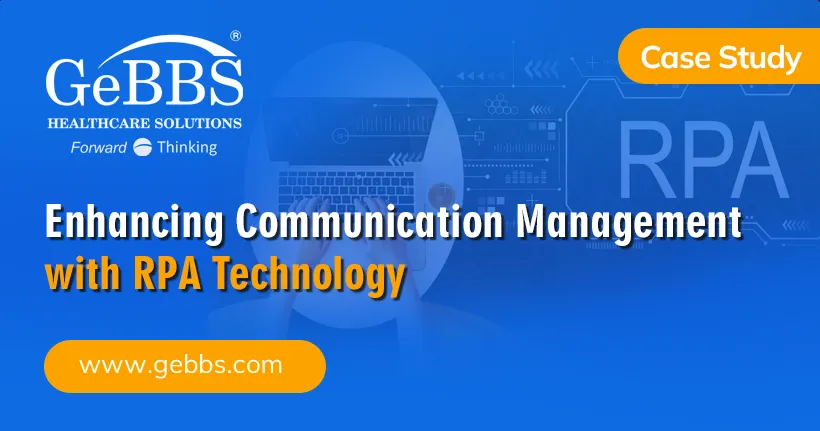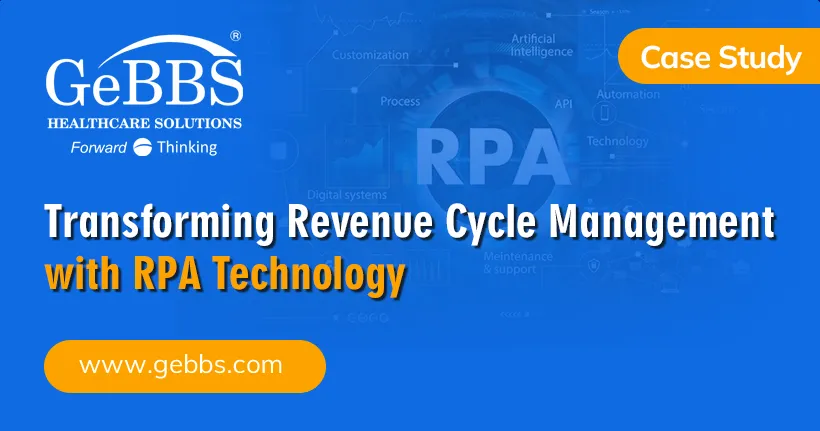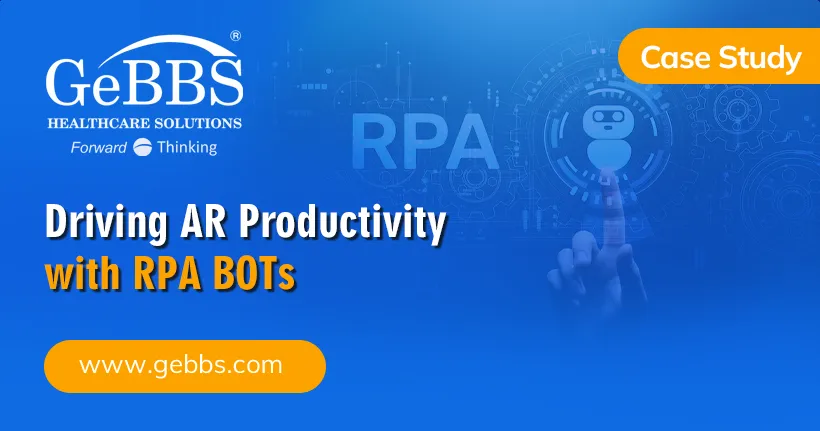GeBBS Healthcare Solutions applies insights to encounter details that lead to appropriate risk scores and ensures compliance.
Patients are complex. This is especially true when they are Medicare Advantage enrollees. These older adults typically enter the healthcare system with a specific complaint, requesting treatment for that one issue. Their path is not always straightforward. They are diagnosed, treated, and then sent home. Often, some follow-up care happens to monitor the issue and make sure it is not getting worse.
If indeed that were all that was happening, the on-going reimbursement related to that patient would also be simple and straightforward. However, these elderly patients often bring with them a host of other underlying, chronic, and active conditions, too. A weak heart. Breathing problems. Pain in their joints. These chronic conditions can lead to additional complications. This can make it even more complicated for the health plan to ensure that they are receiving the right risk score and not leaving themselves exposed to unnecessary risk when a RADV audit is concerned.
While some of them may not require treatment in the future (or at least not right away), others will. And if a busy provider doesn’t pay close enough attention to the details when documenting the patient’s specific diagnosis using the correct documentation for HCC codes—or more likely, hasn’t been fully educated about HCC and therefore doesn’t understand the nuances involved in performing this detailed work—the reports they file might not be fully accurate.
Why does that matter? Two important reasons:
1. The quality of the care the patient will receive is impacted.
2. It puts the financial health of the payer institution behind that enrollee in jeopardy. And when this happens again and again over time, the results can be catastrophic.
In other words, when HCC coding is even slightly “off” it puts everyone—patients, providers, and plans—at high risk.
To see this in action, imagine this: a 79-year-old man who is a Medicare Advantage enrollee goes to his doctor complaining of back pain. He’s overweight. He has diabetes and there’s a place on his foot that’s starting to bother him. He’s also revealed he’s feeling depressed. If he continues this same path, it’s likely he’ll need additional care to treat these other issues as well.
To document the encounter, his busy provider enters diagnosis conditions for that day only but does not go further into documenting the overall care. This simple action—which is repeated in healthcare thousands of times a day—will affect the reimbursement for that patient now, and into the future.
Will this elderly patient get better? Hopefully, the immediate issue will improve, and his doctor will provide the quality care he needs to manage his symptoms. But looking realistically at the whole patient, there’s more than a good chance his chronic conditions, combined with his risk factors—obesity, age, depression and diabetes—are setting him on a path that will require significantly greater, on-going care in the future. Will the patient get the care he needs, and will the plan be properly reimbursed for this future care they will need to deliver? If risk adjusted conditions are not completely documented and/or abstracted and sent to CMS, the answer could be no.
The Answer: Specialized Expertise
When a patient has a specific problem that is getting worse or that their regular doctor can no longer treat, they get specialized help. When a provider or plan needs help ensuring they have the most accurate risk adjusted conditions captured, they should follow that same lead and seek out the best specialized, trusted expertise they can find.
Consider GeBBS’ Payer Solutions. We are laser-focused on risk adjustment as well as quality. Our certified coders know how to comb through your data, capturing and suggesting deletion of risk adjusting diagnostic codes, to ensure no opportunity is missed.
5 Reasons to Partner with GeBBS
- One platform for all your Risk Adjustment and Quality initiatives.
- Intuitive, comprehensive solutions giving your organization a platform to improve productivity, increase accuracy, provide real-time analytic reporting, and control on projects.
- NLP/AI based workflow to ensure higher quality validation of records, proactive and auditable coding process, and provider education.
- Identifying gaps in care through process improvement, resulting in improved quality.
- FlexSourceTM engagement model for all services and technologies, customized to fit your requirements.
GeBBS Insights in Action
Read below to find out how GeBBS applied their specialized knowledge, proprietary technical tools and industry expertise for one of the nation’s largest Medicare Advantage providers, utilizing a multi-level review to identify areas where deletions should be submitted to CMS as well as identifying any additional conditions that may not have been picked up. This ensures that they are prepared for any audits that they could get selected for as well as ensuring compliance for all conditions submitted to CMS. When you are selected for a RADV audit, time is of the essence.
Client
- One of the nation’s largest health plans, delivering benefits to nearly 6 million people in all 50 states and the District of Columbia.
- Of these, 1 million+ are Medicare Advantage.
Challenge
- Before implementing the GeBBS Solution, the plan had holes in collecting the data and correct documentation they needed.
- This was resulting in non-complete HCC risk scores and faulty add and delete files being submitted to CMS. This left them exposed in multiple areas as well as if they are selected for a RADV audit.
Risk Adjustment Chart Review: The GeBBS Difference
Proprietary technology designed exclusively for payers: GeBBS’ iCode Risk Adjustment Workflow
- One Platform that gives choices and flexibility
- Risk and HEDIS
- NLP based coding
- Concurrent and Retrospective Reviews to include data validation audits o Vendor or internal staff
- Monitoring quality
- Tracking and monitoring your RAF score o Comprehensive provider education
- Single reporting and dashboards
- Ability to scale quickly and complete projects of any size
- Full-service HCC risk adjustment coding solutions
- ACA-Commercial
- Medicare Advantage
- Managed Medicaid
Are You RADV Audit Ready? Click Here for 3 Strategies to Get You There.

Solution
GeBBS performed a first and second level review on the Plan’s Medicare Advantage enrollees, specifically:
GeBBS performed a second level review on a subset of the client’s population to 500,000 records. This was done by utilizing certified coders that reviewed the records in its entirety to validate, suggest deletions, as well as identify conditions that were missed during the first level review. By doing reviews utilizing this method, he plan was able to ensure that the right risk score would be associated with the members, ensuring the right reimbursement would then be associated with each member. Also, in the event of an audit, this ensures that there was a two-way look, happening on their members.
Results
GeBBS was able to identify areas of documentation concern that would result in a non-passing audit on a condition over condition basis.
These suggested deletions serve two purposes. The first being the plan can submit a delete file or confirm that those conditions were never submitted to CMS. The second, based on those documentation insufficiencies, the plan can deliver targeted education out to their providers on a specific or broad level for future condition documentation. This changes provider documentation behavior long term and ultimately improves relationships, at the point of care. As a result of this multi-level two way audit, GeBBS additionally identified 20% more conditions that risk adjust to an HCC during the second level review, giving the plan more peace of mind that each of their members has the right risk score submitted.
Overall Project Completion
Average HCCs abstracted per member from Level 1 vs. Level 2
- Level 1 Average HCCs: 3.75
- Level 2 Average HCCs: 4.5
GeBBS Healthcare Solutions was able to provide the plan with actionable data to show both additions and deletions to make sure the plan had the right risk adjustment conditions for all their members. The information provided by GeBBS was not only used for deletions and submissions but going even further to track trends and provide much needed feedback to all their providers.






